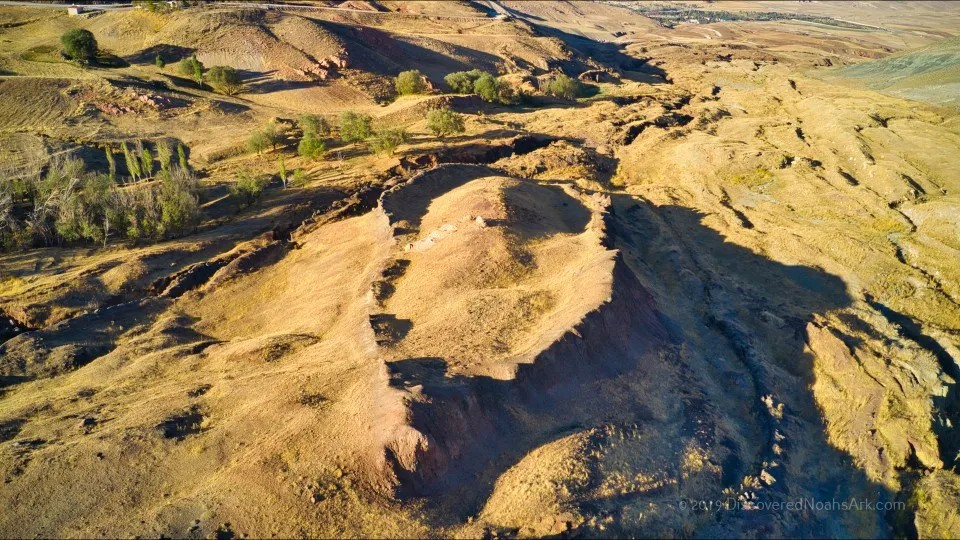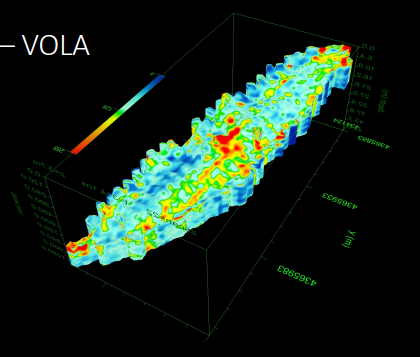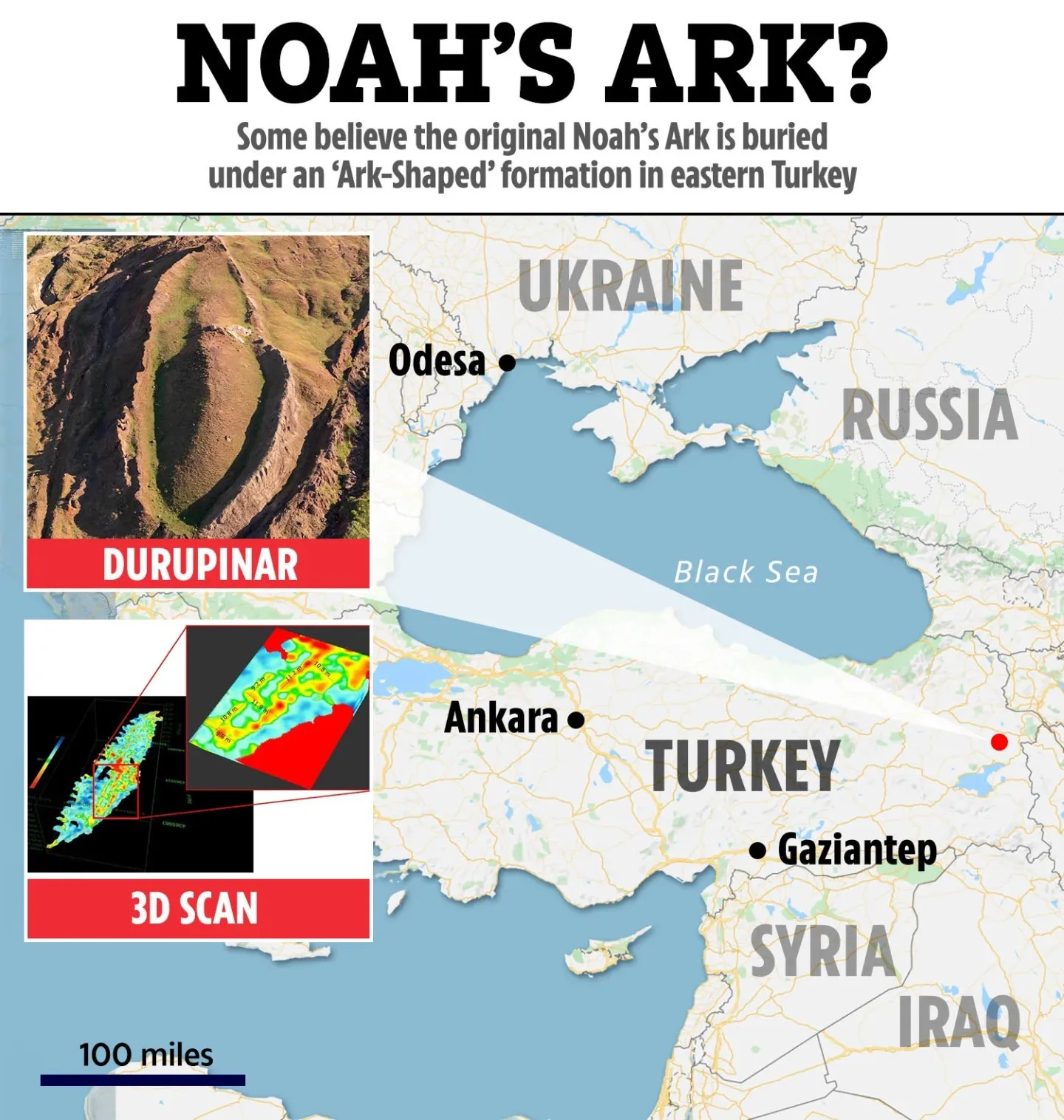Aerial views of a dry, barren landscape with sparse vegetation may not seem particularly remarkable — unless you believe you’re looking at the resting place of one of history’s most legendary vessels: Noah’s Ark.
After years of research and planning, a team of scientists is now preparing for a groundbreaking archaeological excavation at a site believed by many to be the final resting place of the biblical Ark.
Two researchers conducting a geophysical study. Black-and-white photo of the Ark from 1961. Photo: Noah’s Ark Scan
“After gathering significant evidence and developing a detailed preservation plan, we’re now seriously considering excavation,” the team revealed.
Promising Discoveries Fuel the Enthusiasm
Excitement around the project grew following a series of promising soil analyses. Turkish geologist Dr. Memet Salih Bayraktutan collected 22 samples from both the interior and exterior of a boat-shaped geological formation. The samples were sent to Atatürk University in Erzurum for analysis — and the results were remarkable.
“We found evidence consistent with the decomposition of wood,” researchers explained.
3D scan of a rock formation. Photo: Noah’s Ark Scans
They noted that the pH levels inside the structure were significantly lower than outside, and the interior contained a higher concentration of organic matter. Additionally, potassium levels were higher inside the formation — another clue pointing toward decayed wooden material.
Map of Turkey showing the Durupinar site, which has the shape of the Ark – just 30 kilometers from Mount Ararat. Photo: The Sun
Another compelling observation was the seasonal discoloration of grass inside the structure, which turns a more pronounced yellow in the fall — a pattern the researchers believe is linked to the presence of a buried man-made construction, not just natural environmental factors.
Peering Beneath the Surface with Ground-Penetrating Radar
Photograph from 1961. Photo: Noah’s Ark Scans
In October 2019, the team conducted an in-depth Ground Penetrating Radar (GPR) survey of the site using dual frequencies to map various depths beneath the surface — all without disturbing the soil.
Located just 30 kilometers south of Mount Ararat in eastern Turkey, the Durupınar site has long intrigued believers and scientists alike. The use of GPR technology — which emits electromagnetic waves into the ground and captures reflections from subsurface anomalies like walls or tombs — revealed rectangular shapes buried approximately 6.7 meters deep beneath the formation.
A 3D scan of the rock formation supported these findings, and a second geophysicist later reviewed the data and identified what appeared to be a long corridor leading to a central chamber — suggesting the presence of large internal cavities.
“The goal is to insert a camera through a narrow borehole to visually inspect the interior without disturbing the formation,” said project leader Andrew Jones.
The Broader Significance: More Than a Biblical Tale
While Noah’s Ark holds deep religious significance in Christianity, Islam, and Judaism, researchers are just as intrigued by its broader human implications — questions of survival, resilience, and faith in the face of catastrophe.
“This is about more than just religion,” the team explains. “It’s about how people have processed and passed down stories of devastating natural disasters across millennia.”
The presence of embedded organic materials within the soil suggests the site may once have been submerged — possibly lending credibility to ancient flood narratives.
A Theory Still Under Investigation
Could this truly be evidence of the Great Flood? While the theory remains speculative, the idea that ancient civilizations may have experienced and survived such a deluge continues to captivate scholars, theologians, and historians around the world.
In Genesis chapters 6 through 9, the Bible tells how God, dismayed by humanity’s wickedness, chose to cleanse the world with a flood — sparing only the righteous Noah, his family, and pairs of animals aboard a massive ark he was commanded to build.
“We’re planning to collect core samples from throughout the formation,” Jones said. “That will help us verify whether the angular shapes and geometric patterns we've observed in the radar scans are the result of human design or natural formations.”
What's Next?
So far, findings have continued to support the researchers’ working hypothesis: that the formation is not merely part of the surrounding mudflow but possibly a distinct, man-made structure.
Whether or not this turns out to be the Ark of Noah, the investigation has reignited global interest in one of humanity’s oldest and most powerful stories — and may one day provide answers to questions that have lingered for thousands of years.












